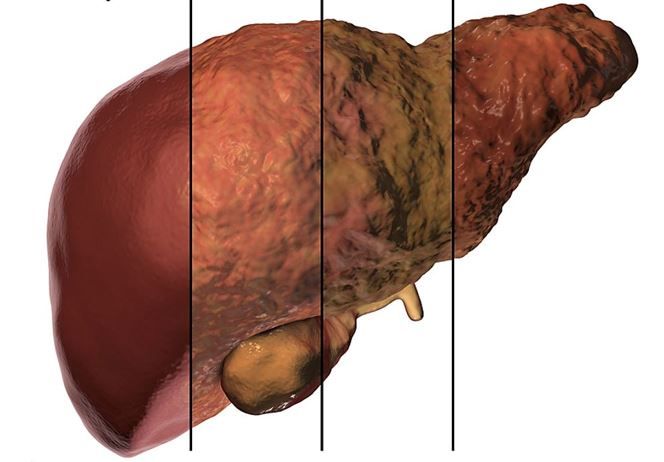©Kateryna_Kon/Adobe Inventory
In people with nonalcoholic fatty liver illness (NAFLD) and kind 2 diabetes (T2D), the chance of hepatic decompensation and hepatocellular carcinoma (HCC) at 5 years was greater than 3-fold better than amongst these with out T2D, in accordance with new information from a world meta-analysis.
After adjustment for confounding variables, research investigators discovered that T2D was an impartial predictor of each hepatic decompensation and incident HCC.
The analysis crew, led by Daniel Q Huang, MBBS, of the NAFLD Analysis Heart and the division of gastroenterology and hepatology on the College of California San Diego, additionally discovered that elevated HbA1c was related to hepatic decompensation.
NAFLD, together with nonalcoholic steatohepatitis (NASH), is the commonest type of liver illness in people with T2D, with greater than 1 in 3 affected by NASH and 1 in 6 by superior liver fibrosis, in accordance with the authors.
“Earlier research have proven that kind 2 diabetes is related to hepatic decompensation amongst folks with cirrhosis, hepatitis C virus, and heavy alcohol consumption,” investigators wrote within the Lancet Gastroenterology and Hepatology. “Nevertheless, the chance of hepatic decompensation (growth of ascites, hepatic encephalopathy, or variceal bleeding) amongst people with NAFLD with and with out kind 2 diabetes has not been systematically assessed.”
Their meta-analysis comprised particular person participant degree information from 6 worldwide cohorts whose individuals had magnetic resonance elastography (MRE) between February 27, 2007, and June 4, 2021. Along with liver fibrosis recognized by MRE, eligible research included longitudinal evaluation for hepatic decompensation and loss of life and individuals have been adults aged ≥18 years with NAFLD who had information supporting a prognosis of T2D at baseline.
For the first end result, Huang et al have been thinking about hepatic decompensation, outlined for the research as ascites, hepatic encephalopathy, or variceal bleeding. The secondary end result was incident HCC. Competing threat regression utilizing a subdistribution hazard ratio (sHR) was used to match the probability of hepatic outcomes in sufferers with and with out T2D.
FINDINGS
The preliminary cohort numbered 2016; 53.5% have been girls, imply age was 57.8 years, and imply physique mass index was 31.3 kg/m2. After excluding individuals who had hepatic decompensation at baseline and people with out longitudinal information, there have been 1737 individuals within the group for closing evaluation, of whom 602 had T2D at baseline.
Hepatic decompensation. Over a median follow-up of two.8 years, 105 individuals (11.8%) developed hepatic decompensation or died with out hepatic decompensation. The danger of hepatic decompensation (sHR, 95% CI) was considerably greater amongst individuals with T2D vs no T2D at 1, 3, and 5 years:
After adjustment for affected person age, BMI, and race/ethnicity, Huang and colleagues discovered that each T2D (sHR, 2.15; 95% CI, 1.39 – 3.34; P=.006) and HbA1c (sHR, 1.31; 95% CI, 1.10 – 1.55; P=.002) have been impartial predictors of hepatic decompensation when investigators adjusted for affected person age, BMI, and race/ethnicity.
Hepatocellular carcinoma. The evaluation for HCC included 1802 individuals 639 with (T2D). Over a median follow-up of two.9 years, 22 individuals (18 with baseline T2D, 4 with out), developed incident HCC. Just like the chance of hepatic decompensation, threat of incident HCC at 1, 3, and 5 years was considerably better amongst individuals with T2D vs with out T2D (P<.001): 1 12 months 1.34 (95% CI, 0.64 – 2.54) vs 0.09 (95% CI, 0.01 – 0.50) 3 years 2.44 (95% CI, 1.36 – 4.05) vs 0.21 (95% CI, 0.04 – 0.73) 5 years 3.68 (95% CI, 2.18 – 5.77) vs 0.44 (95% CI, 0.11 – 1.33) In adjusted analyses, T2D remained an impartial predictor of HCC growth, related to a greater than 5-fold threat (sHR, 5.34; 95% CI, 1.67 – 17.09; P=.0048) in sufferers with NAFLD. Among the many limitations the authors cite are the potential bias related to retrospective analyses, the potential for the consequences of unmeasured confounders, and the gathering of information at tertiary facilities, which can have launched choice bias for individuals at excessive threat. “The upper threat of hepatic decompensation and HCC in folks with kind 2 diabetes ought to be thought-about when designing medical trials in NAFLD,” investigators concluded. “These information function a name to motion to stop kind 2 diabetes and scale back the rising burden of NAFLD and NAFLD-related hepatocellular carcinoma.” Reference. Huang DQ, Noureddin N, Ajmera V, et al. Kind 2 diabetes, hepatic decompensation, and hepatocellular carcinoma in sufferers with non-alcoholic fatty liver illness: a person participant-level information meta-analysis. Lancet Gastroenterol Hepatol. 2023;S2468-1253(23)00157-7. doi:10.1016/S2468-1253(23)00157-7
